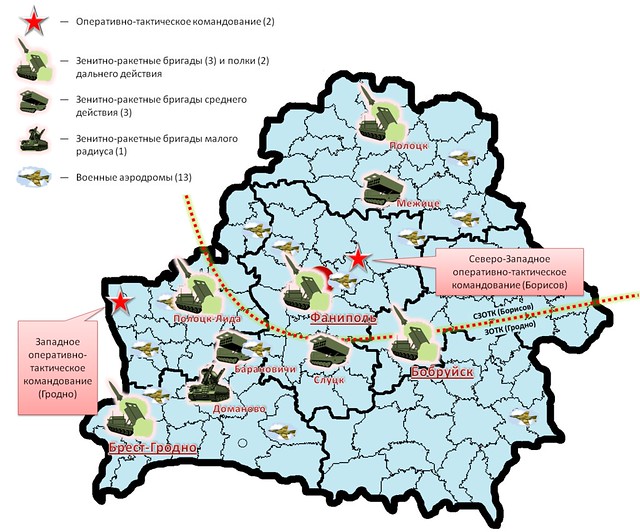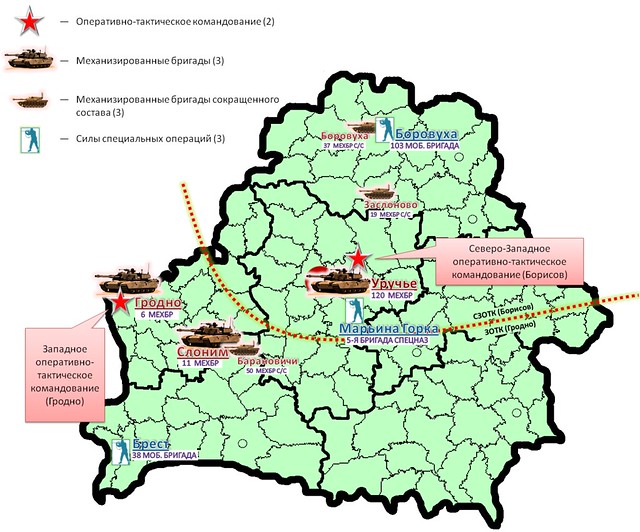You are probably not than much familiar with the Belarusian military.
We already had one topic about its potential reform some time ago.
Let me give you a very high-level overview.
The whole army is divided into two commands: Western Command (headquarters in Grodno), and North-Western Command (headquarters in Borisov). There is nothing that protects East of the country.
The key characteristics of the Belarus Army is that it has a very heavy emphasis on the anti-air defense. This element is by far the biggest. De-facto - Belarusian military is the furthest frontier of the Russian anti-air shield. That's no surprise, because Lukashenko uses this "service provided by Belarus to the Russians" as another bargaining chip in his negotiations with Moscow. Plus, he naturally wants to protect himself from airstrikes.

Land troops have a heavy emphasis on special forces. It is not like in Russia where you would see huge tank brigades. In Belarus emphasis is made on mixed brigades, that include elements of tanks, motorized vehicles, and special ops. Special troops are actually pretty strong and continuously win competitions against Russians, especially in everything that is related to night operations, shooting, sabotage, hand-to-hand combat, and tactical maneuvering (keep in mind that Belarusian soldiers are on conscription, and Russians - professional).

Belarus has made a cognitive choice to not deviate from the conscription army (again, unlike Russia where they started to move much more towards the professional army).
All the above is very simply explained. The key task of the Belarus army is to withstand a significantly superior enemy on its own territory. The first line of defense is the anti-air system designed to buy some time. The second line of defense is special forces brigades whose task is not to engage in frontal warfare, but to conduct fully autonomous razor sharp attacks with motorized support (aka terrorism on steroids + tanks). The third line of defense is combat-ready population. That's why conscription army and constant exercises.
Conclusions1. You can see that an overly heavy emphasis on anti-air systems is largely a waste. This very same resources could be used to re-equip the army with better weapons following changes in the military doctrine, and tasks that need to be performed.
2. Motorized part of the army is in an OK shape, but is in a steady decline. Majority of vehicles are produced in Russia, while Russia's failing to properly re-equip even itself, not talking about supplying anything to Belarus. Lukashenko's military has learned how to upgrade those weapons themselves without relying on Russians, but this can last only that long.
3. There is an ever increasing connection between Belarusian and Chinese military. Recently there were joint Chinese-Belarusian military exercises near Baranovichi to which Russians where not even invited. Chinese started to make "presents" to the Belarusian military in the form of equipment and vehicles. All this shows that even Lukashenko doesn't rely on Russians any more, and is looking for another "god father".





